Of all the species of oyster mushroom, Pleurotus eryngii (king trumpet or king oyster mushroom) are one of the most versatile. Their immense, thick stem has gained them attention as a meat substitute and all-around work horse. Believe it or not, they can also be one of the cheapest mushrooms around. Today we'll take a deep dive into what they are, and what you can do with them in the kitchen.
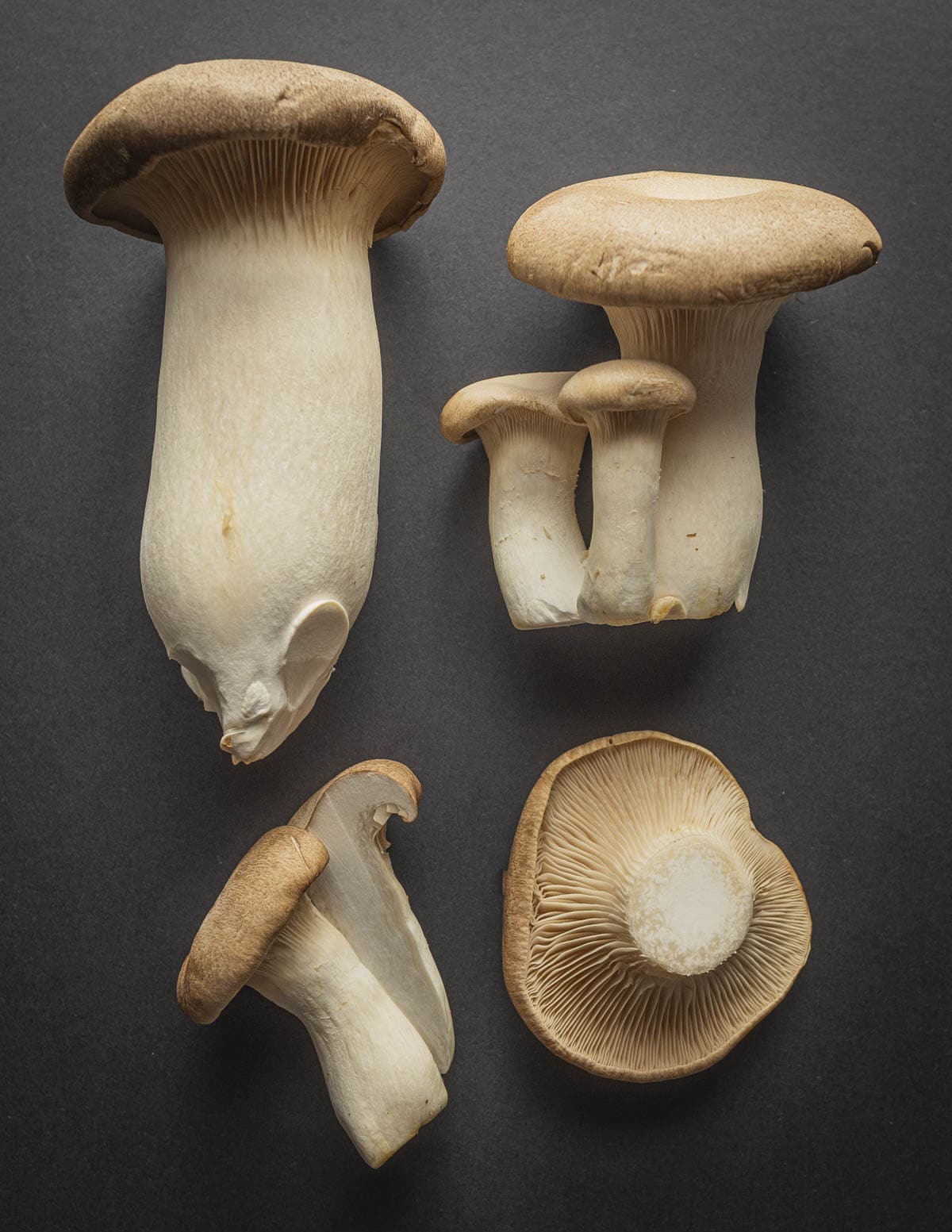
Background
The largest species in the oyster mushroom genus, Pluerotus eryngii is native to the Mediterranean and Asia where it grows wild with Eryngium (sea holly) plants. Interestingly, where other oyster mushrooms are saprobic decomposers (wood-decaying fungi) the king oyster is also a weak parasite of some plants in the Apiaceae family that includes plants like parsley and celery.
Like most Pleurotus species they take well to cultivation. In the U.S. you'll need to grow them or purchase them. Asian markets usually sell them for cheap, as well as some mushroom growers like my friend Mushroom Mike LLC who grows the most delicious ones I've cooked to date. I can usually buy a pound for around $4 at my local Asian grocer.
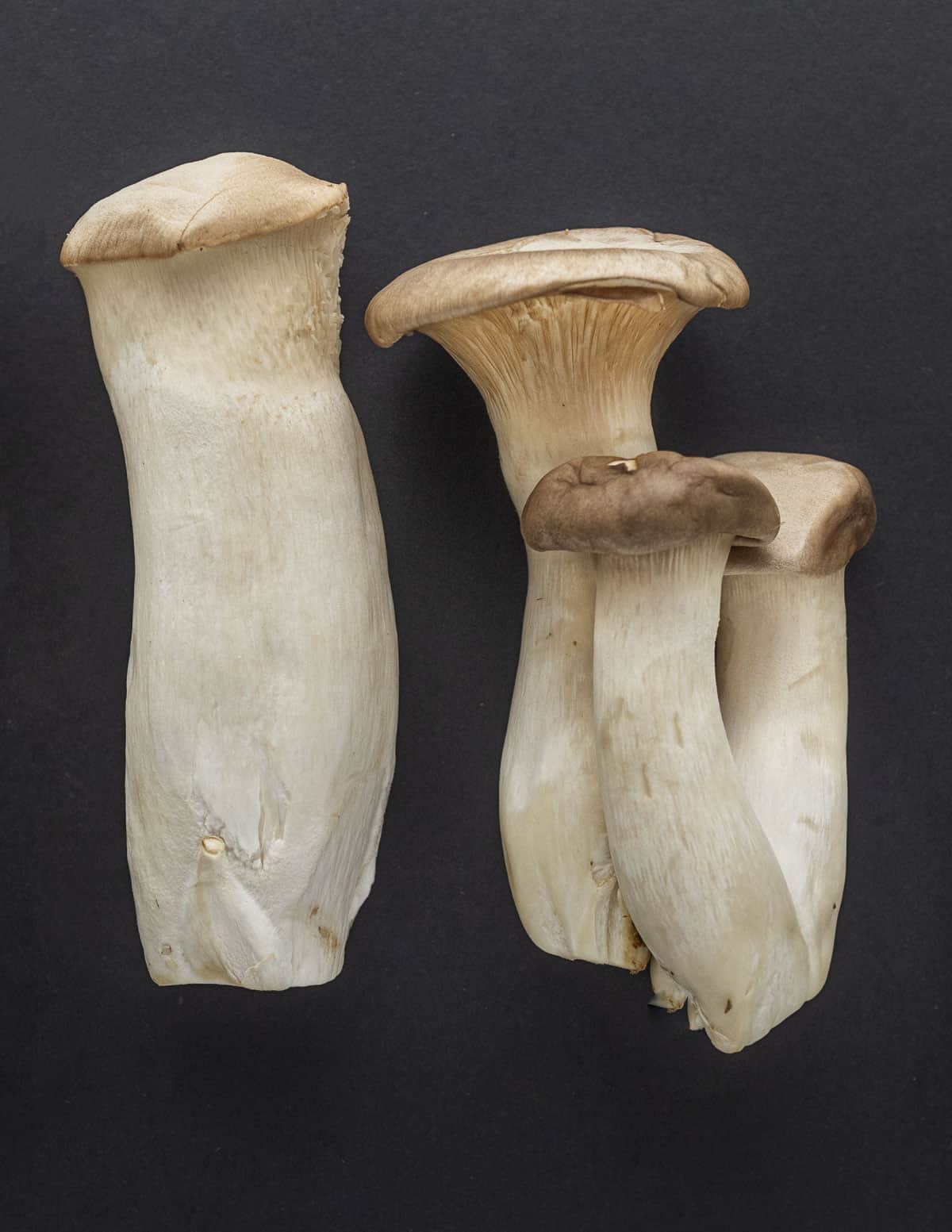
As with their cousin the abalone mushroom, I've noticed a good amount of morphological difference in fruiting bodies between cultivated brands. Some are immensely large with almost non-existent caps. Some are modestly sized with typical oyster mushroom caps that more resemble how they'd grow in the wild.
Cutting and Preparing
The long, thick stems make them uniquely versatile. Unlike most of their Pleurotoid cousins, the stems can be cut into just about any shape you want. Pictured below are a few examples.
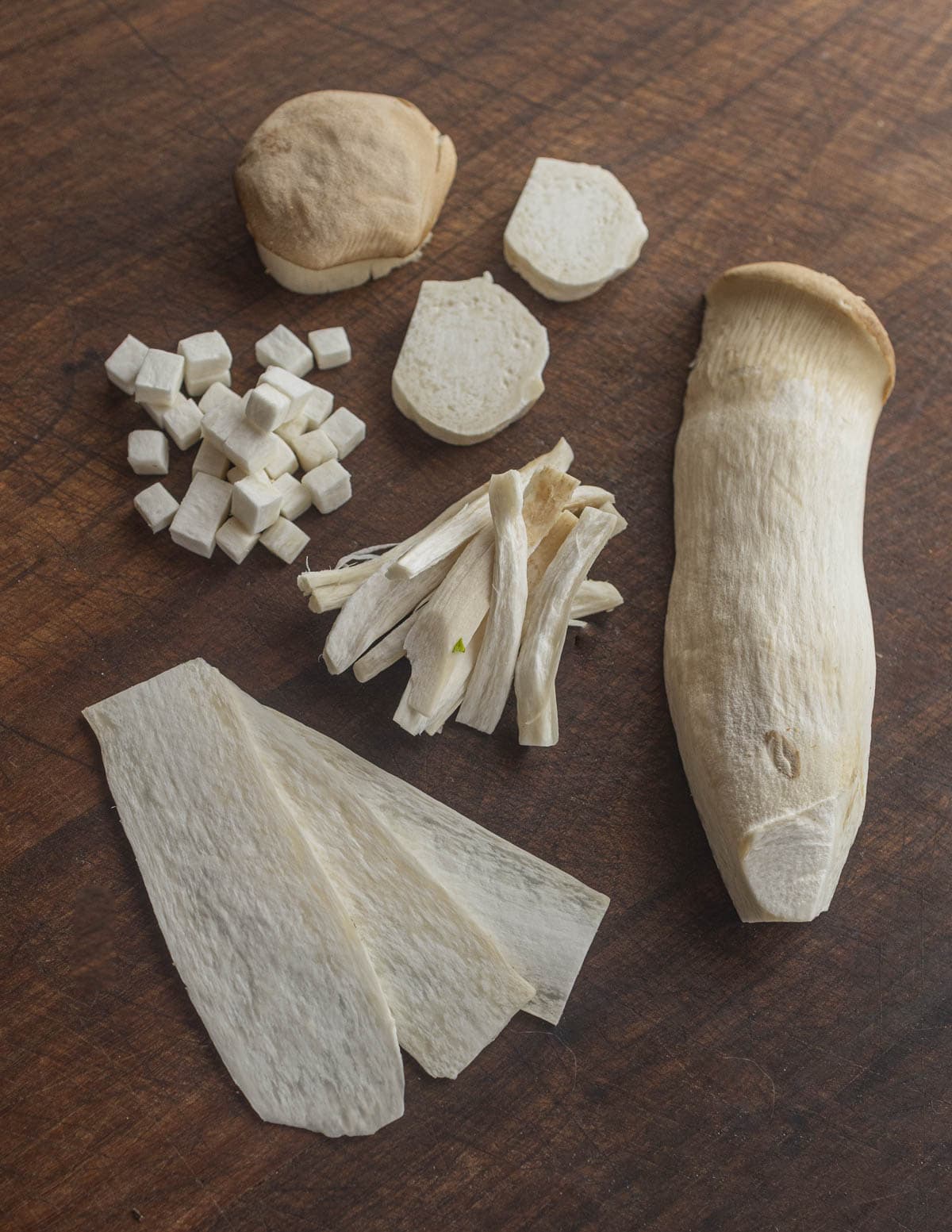
A popular treatment for the mushrooms is cutting thick rounds to cook as vegan scallops. They're not scallops, but they're good in their own right.
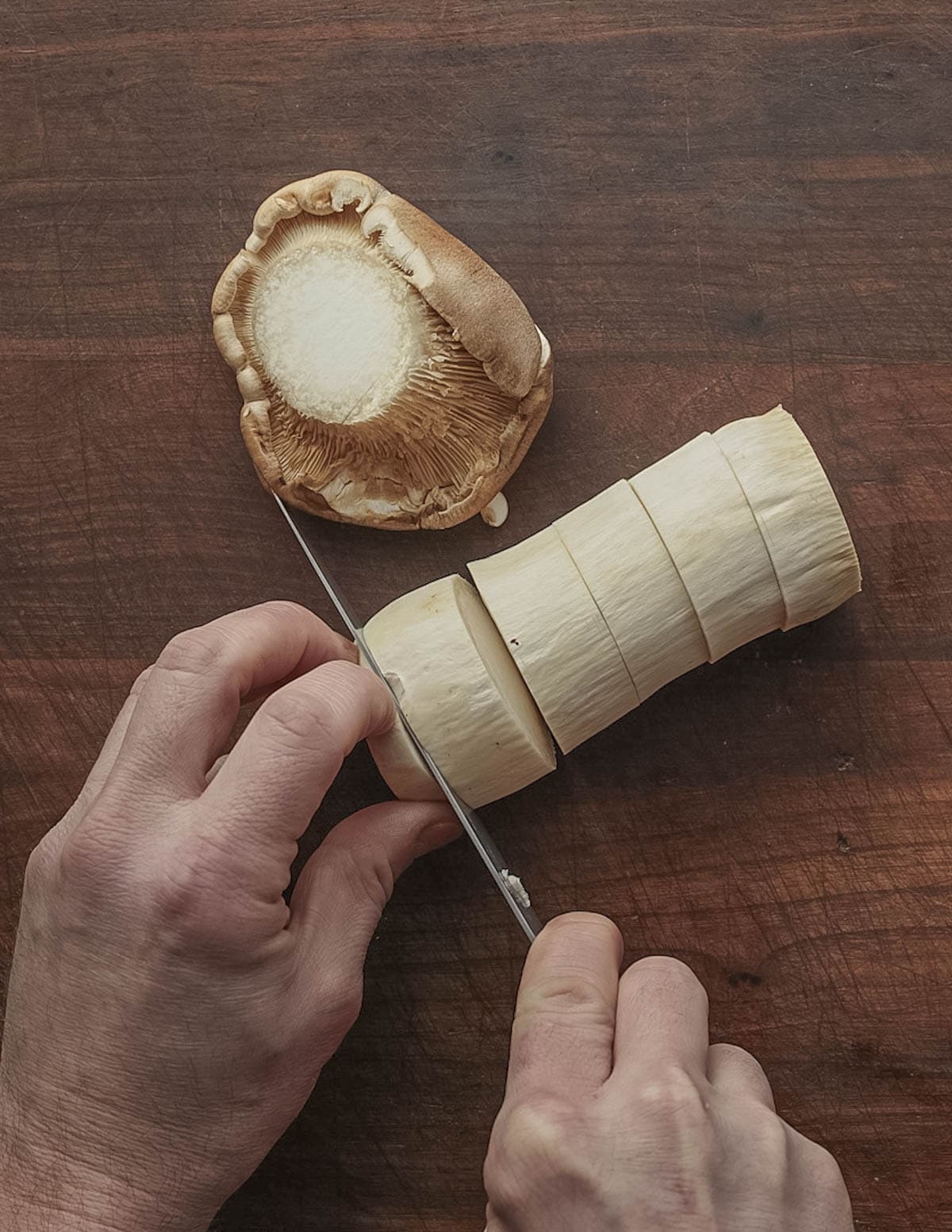
The wide surface area of the stems also makes it possible for the mushrooms to be scored with a fine cross-hatch pattern like a duck breast.
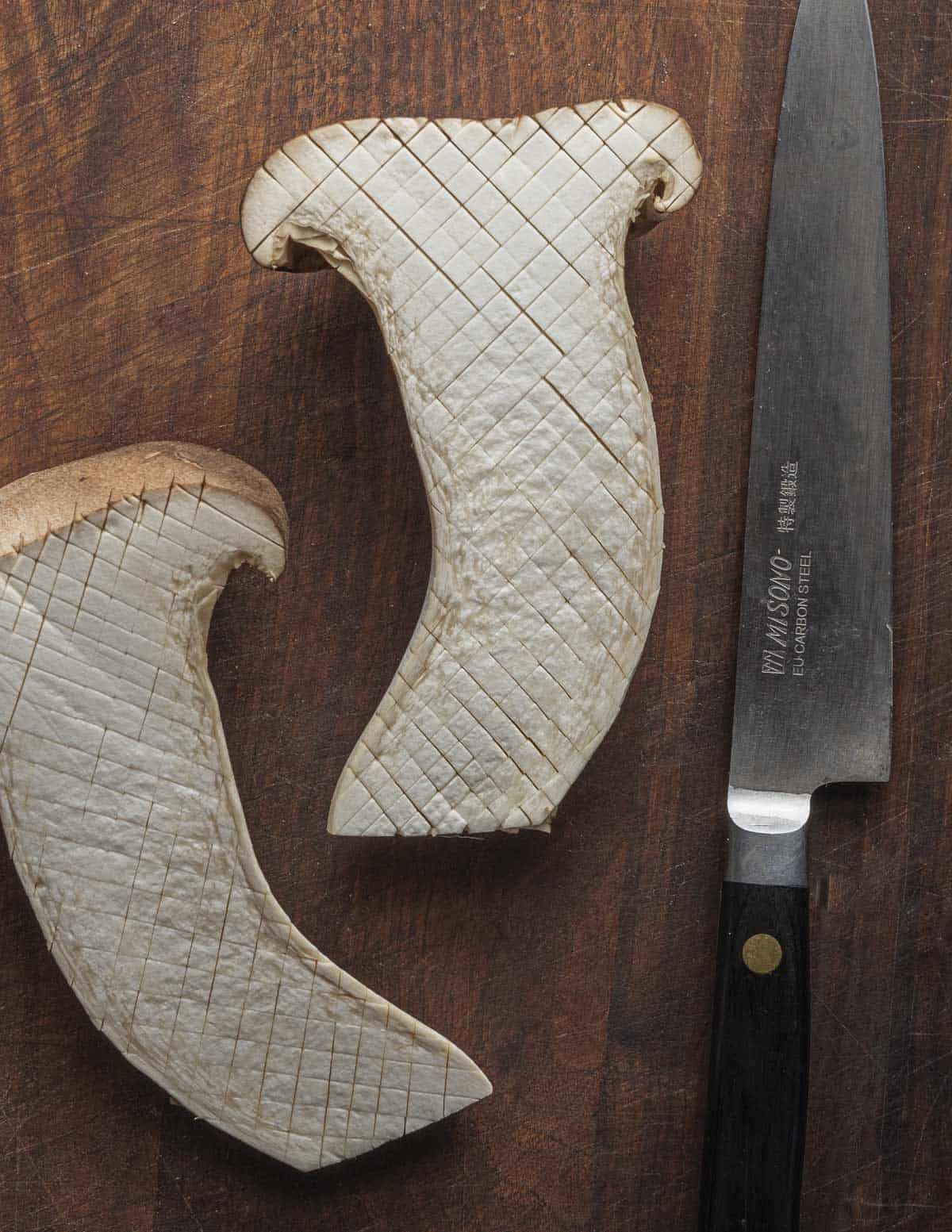
I've often heard people claim that scoring king oyster mushrooms prevents them from curling when cooked. The difference isn't really noticeable to me, and I still notice a slight uneven sear on both scored and un-scored mushrooms, as you can see below.
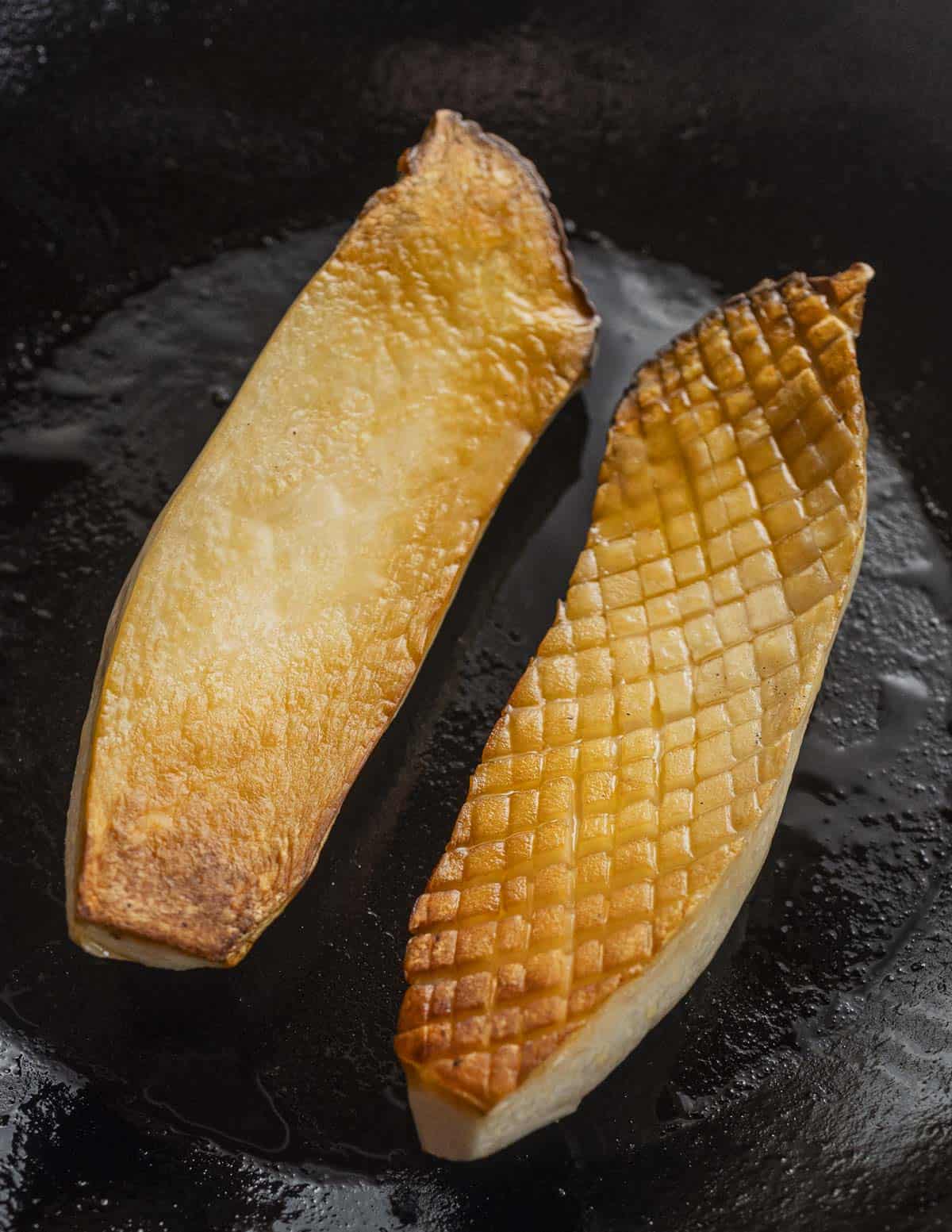
You can get a slightly more even sear by pressing down on the mushrooms when they hit the pan or just flipping them here and there. Continued, slow cooking will caramelize them evenly if they're scored or not.
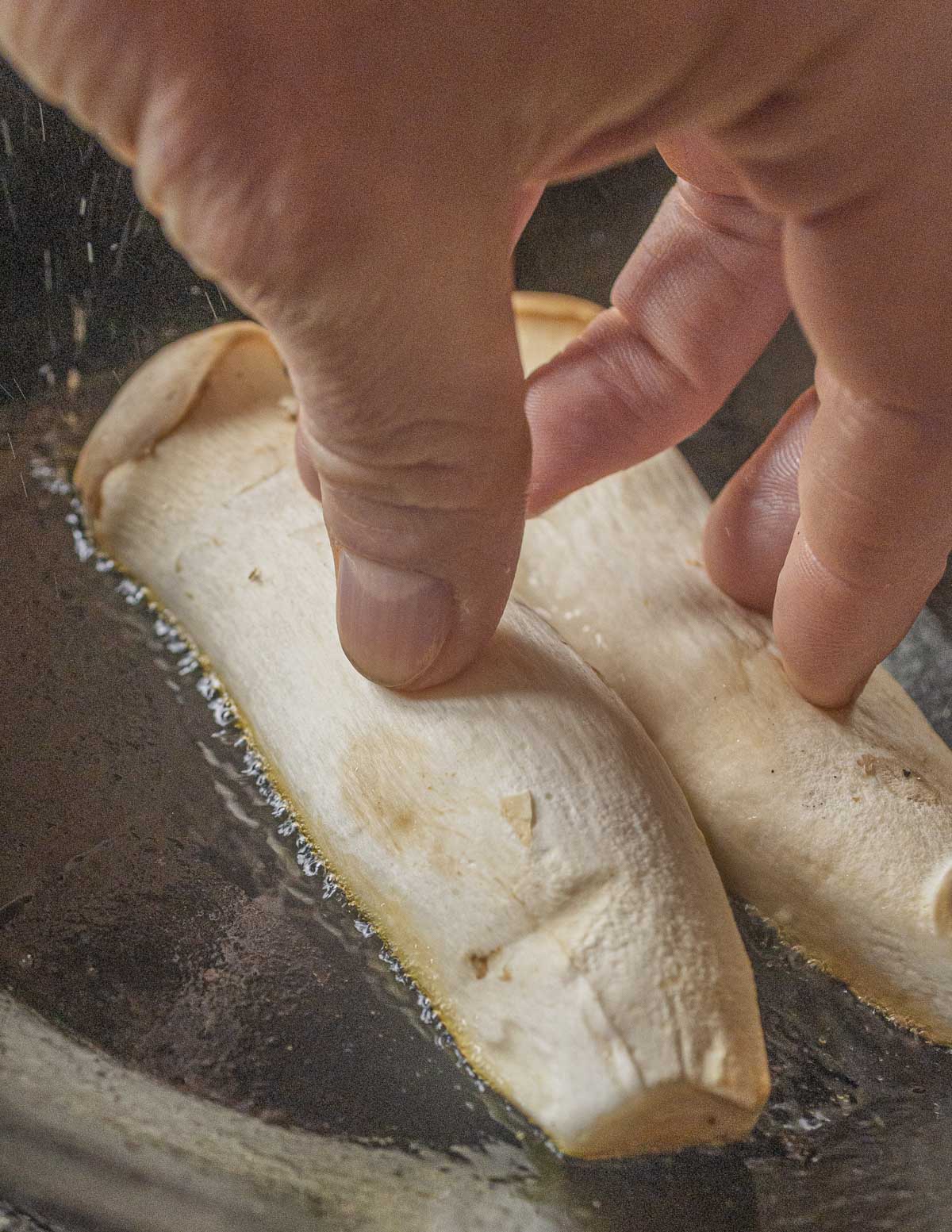
That said, I do like to score mine. I find it helps them absorb oil and brown evenly, and the pattern is attractive. The tiny (⅛th or so) slits can also help catch things like a paste of herbs, a sauce or sizzling butter.
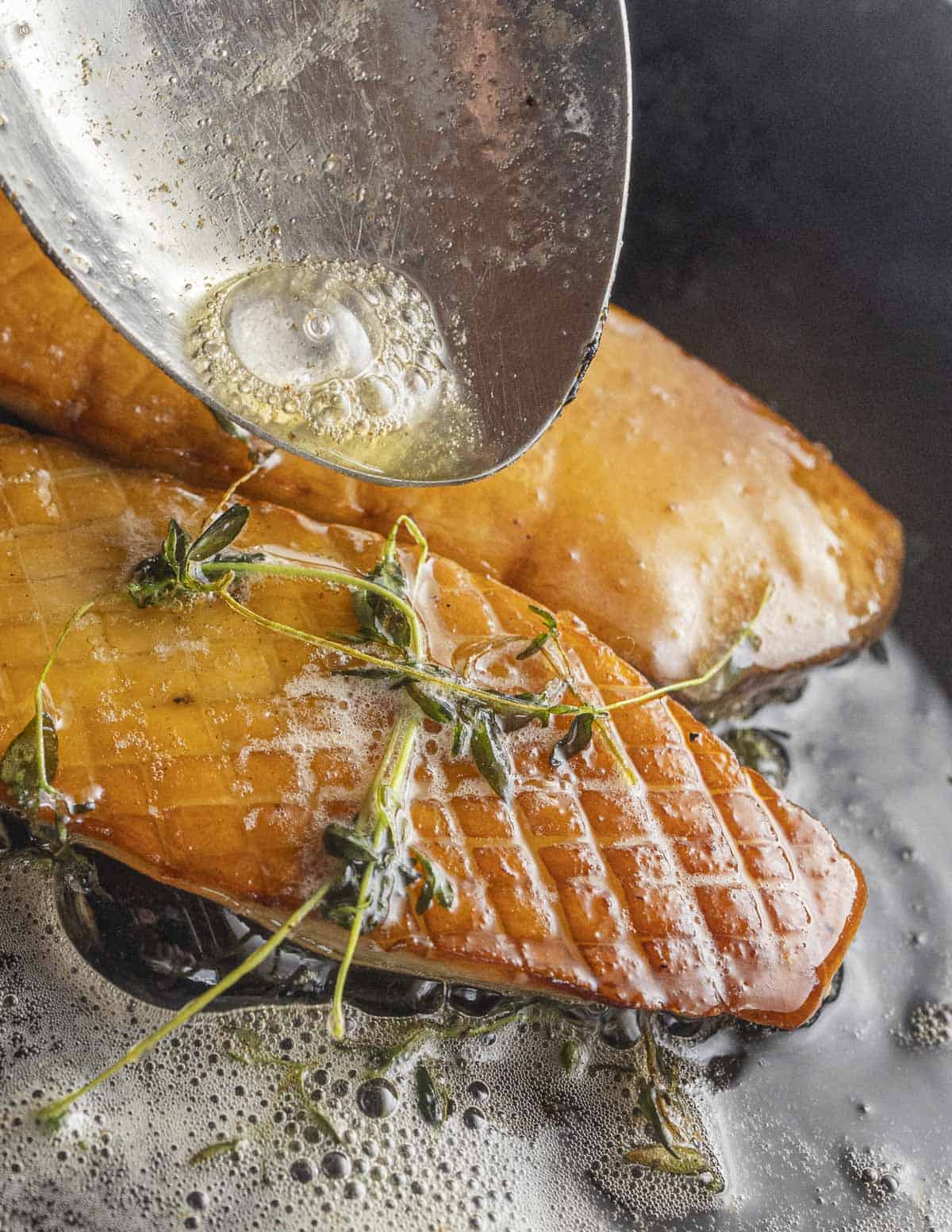
Scoring mushrooms should also only be used for those that will be seared. Scoring mushrooms and grilling or roasting doesn't work the same as the heat's uneven.
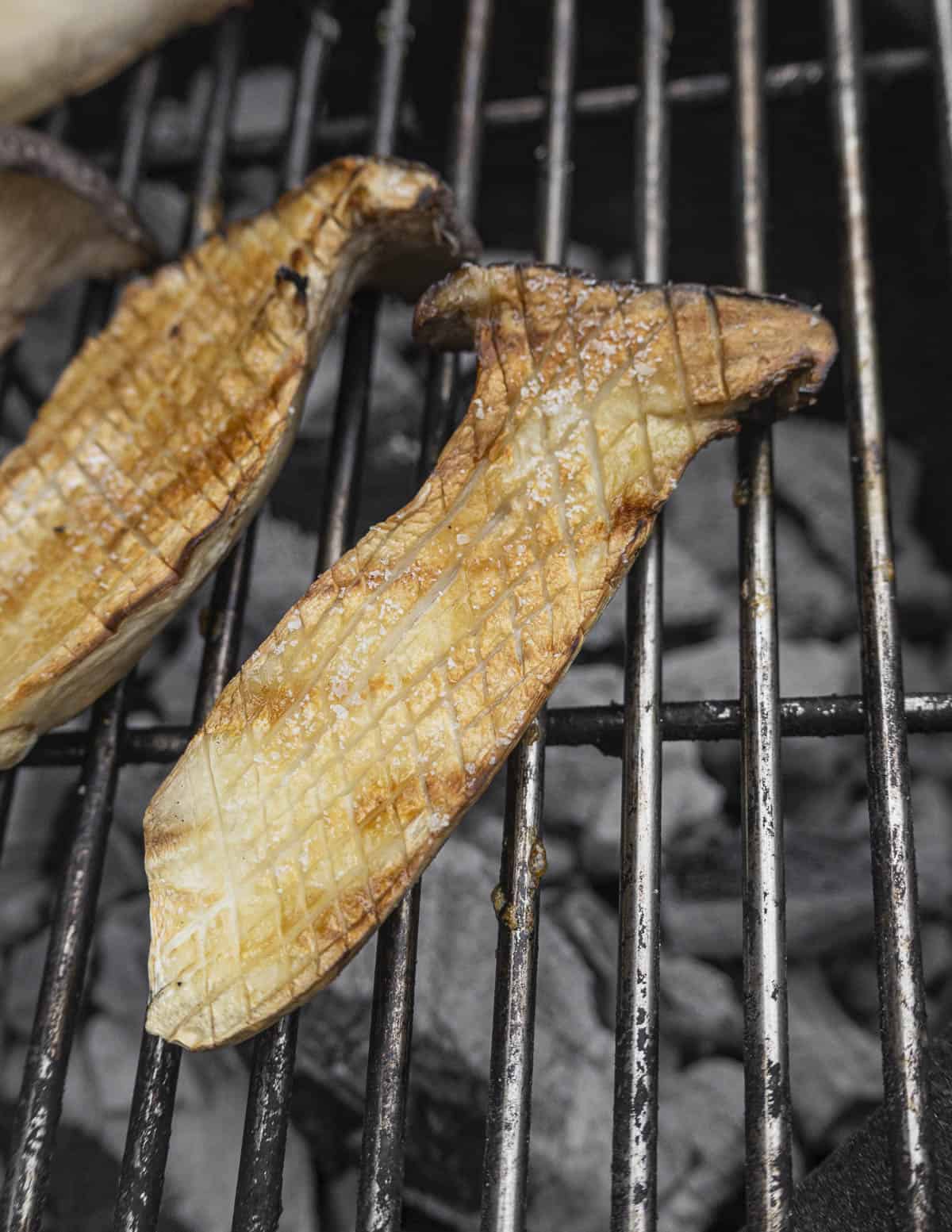
Caramelized mushrooms have a meaty texture and a slightly sweet, nutty flavor, but they can also be served without browning for a lighter touch as in the cup of soup below.
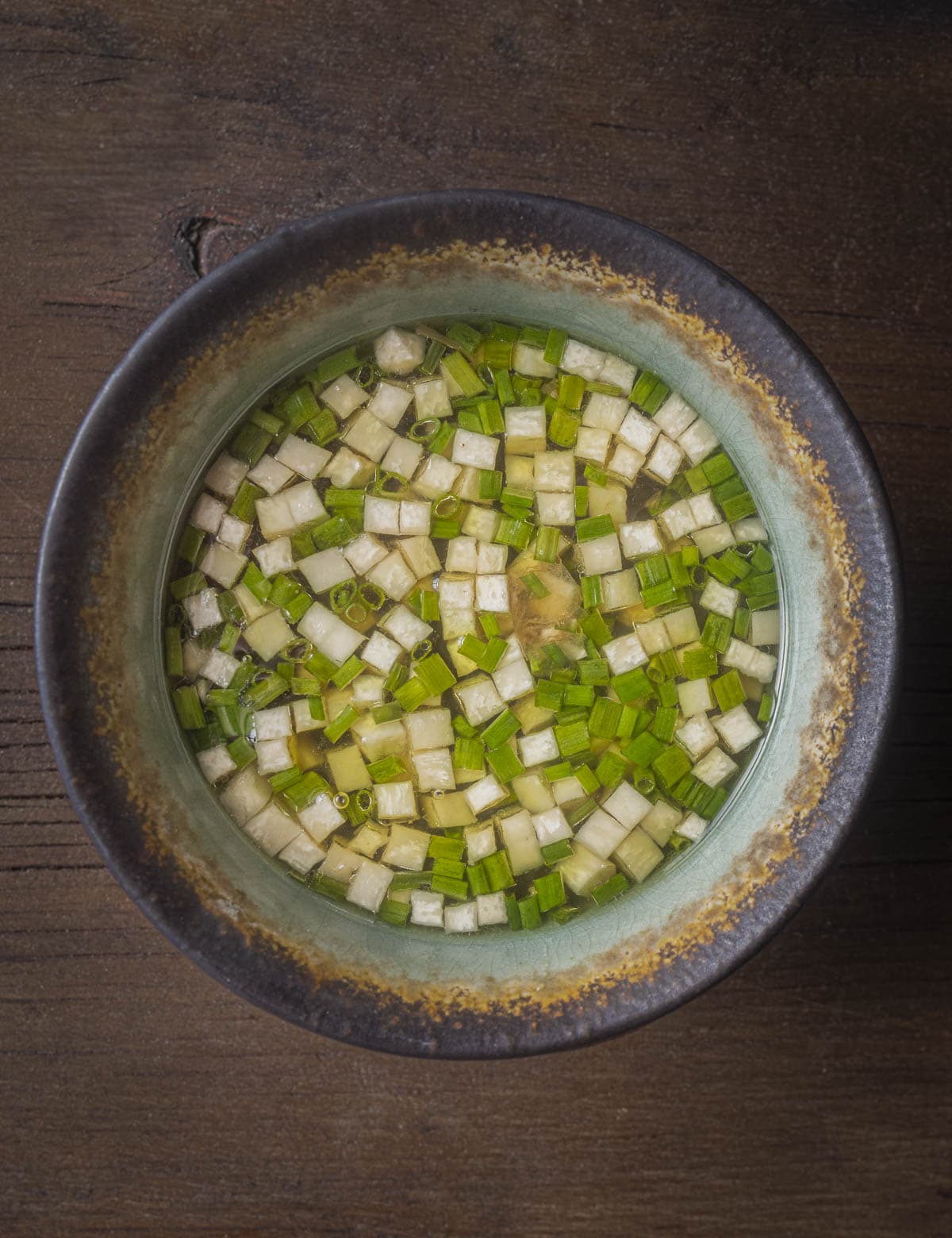
How to Cook
King oysters have a lot of water weight. For the deepest flavor, cook them slowly to remove moisture and brown them. Other than that, it's hard to describe all the possibilities in a few hundred words.
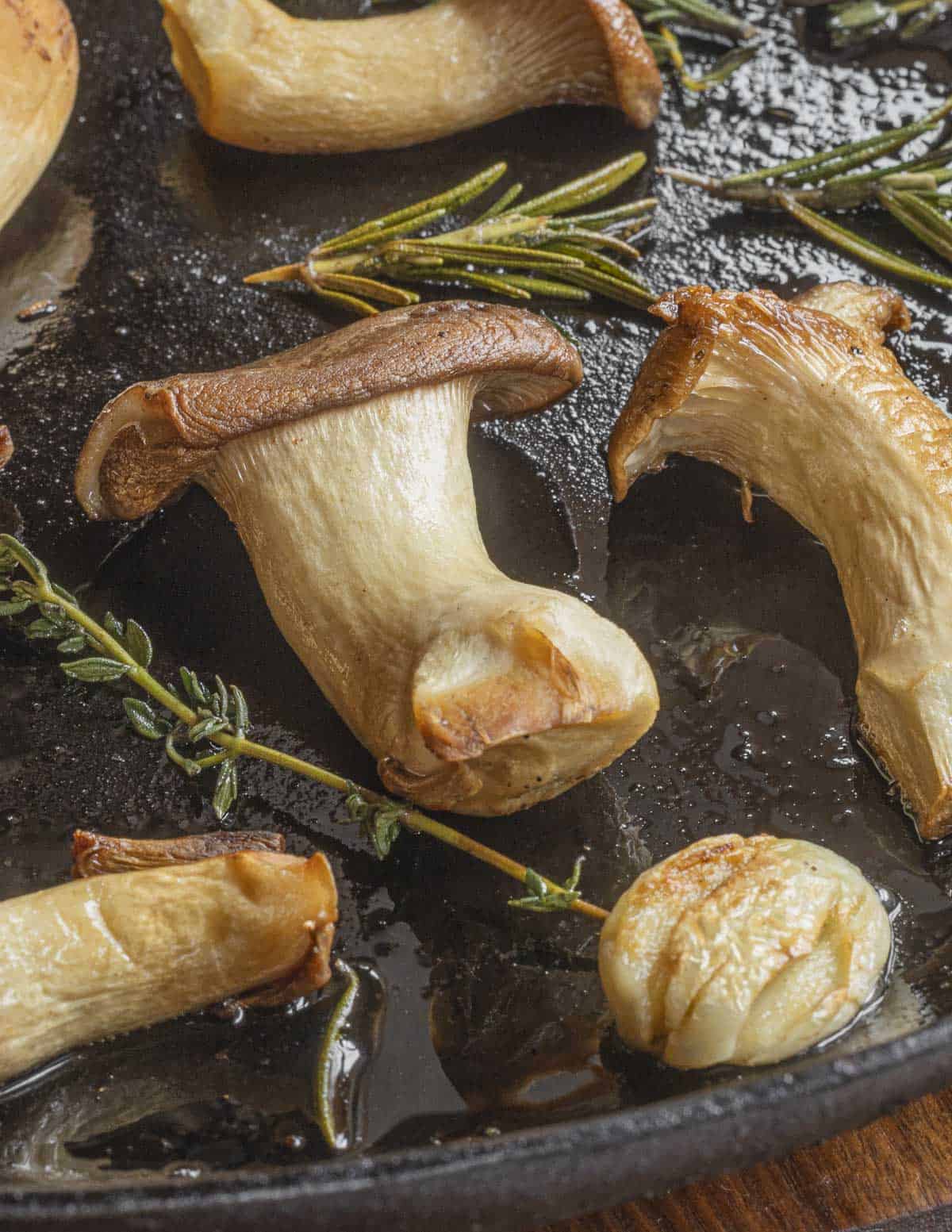
Smaller mushrooms are good trimmed and pan-roasted whole as a mushroom side dish. For something like a stir-fry you'll want to pre-cook the mushrooms and get them golden brown, adding them with the vegetables later.
Like most mushrooms, they're a perfect garnish for steak and proteins. Add a vegetable and a simple sauce and you have one of my favorite meals.
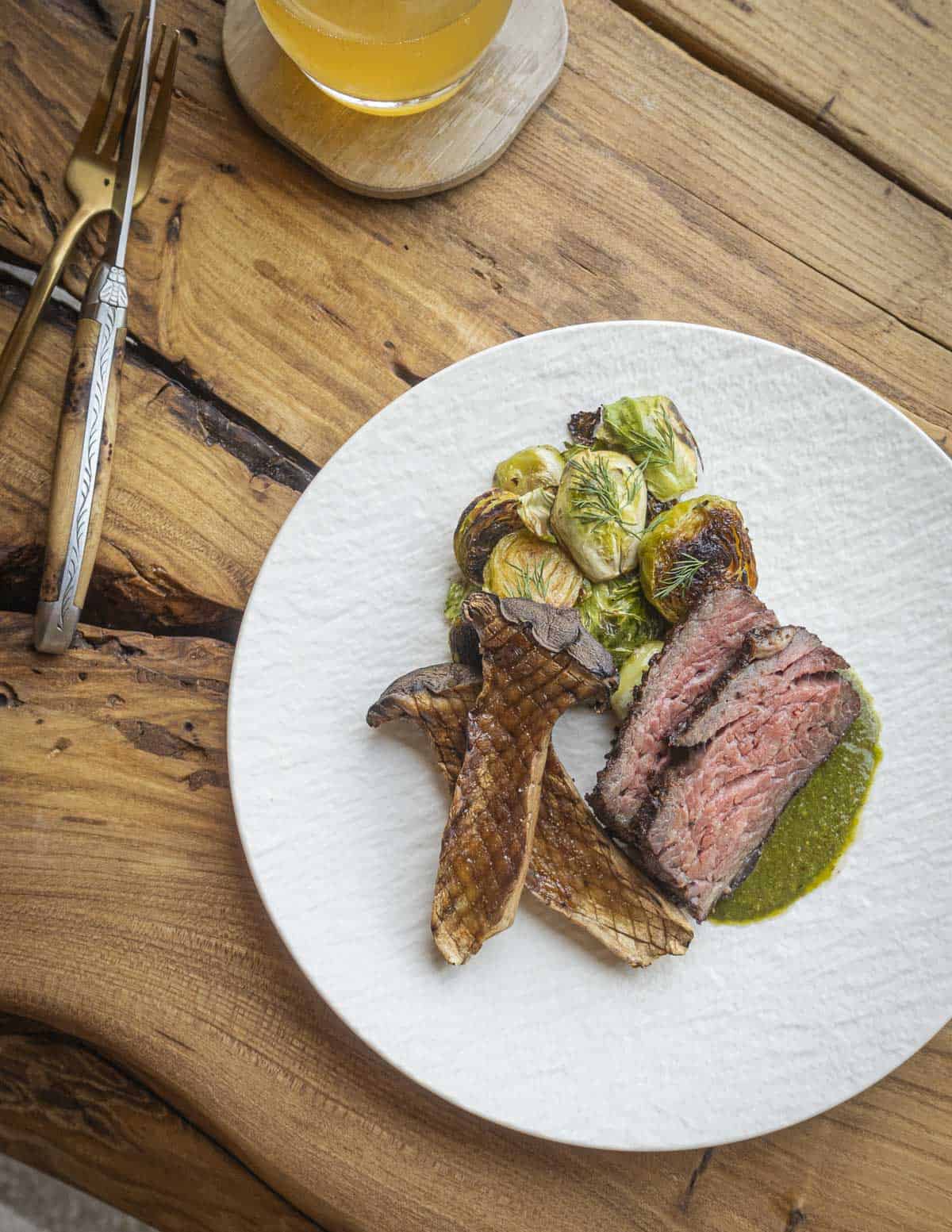
Cubed they can work as a meat substitute in stews and vegetable medleys. In the image below the mushrooms are browned to coax out their umami flavor before adding a green curry sauce.
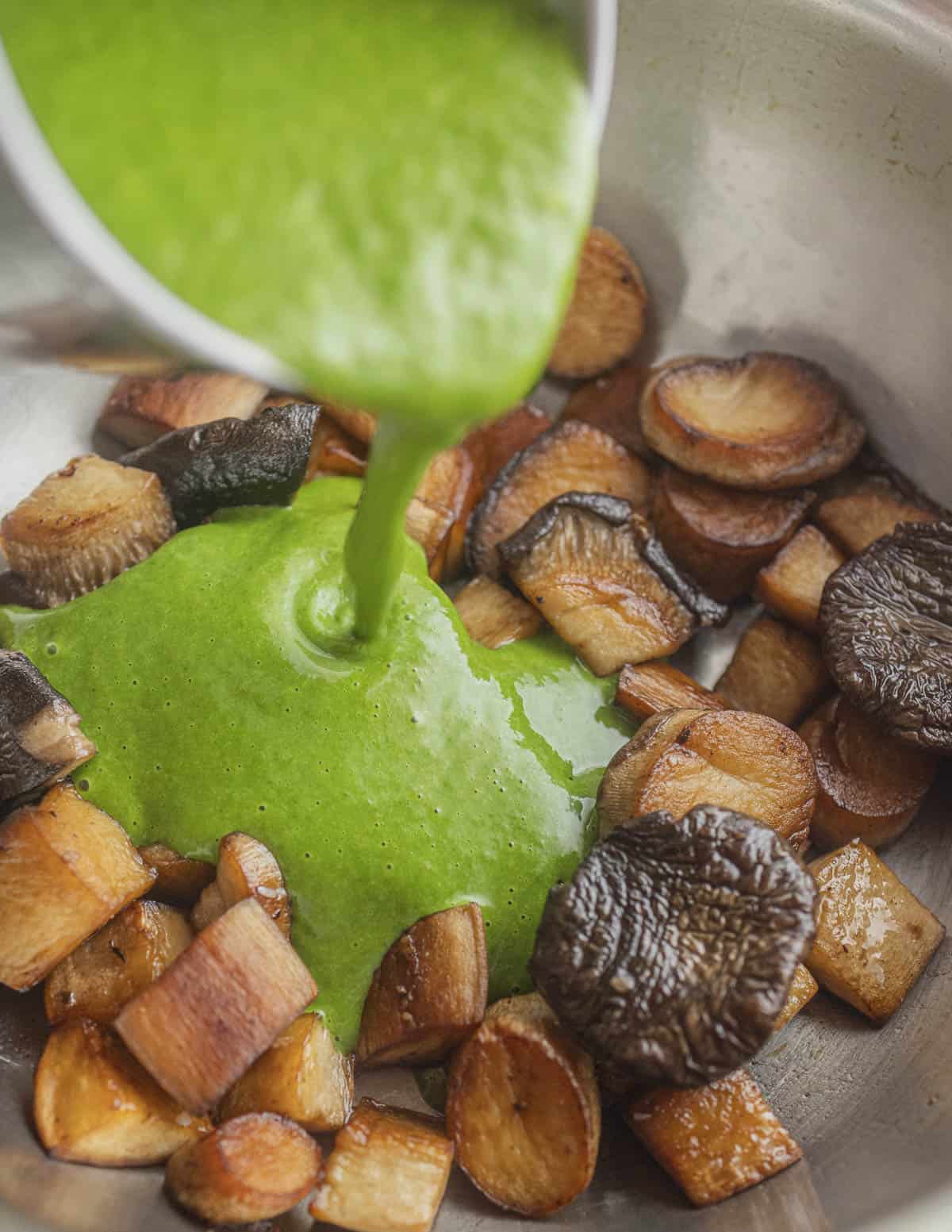
Shaved paper thin or cut into julienne they can be used as mushroom noodles, or marinated and used as a condiment for brothy soups like ramen. They're also a good candidate for fermentation as they hold their texture well.
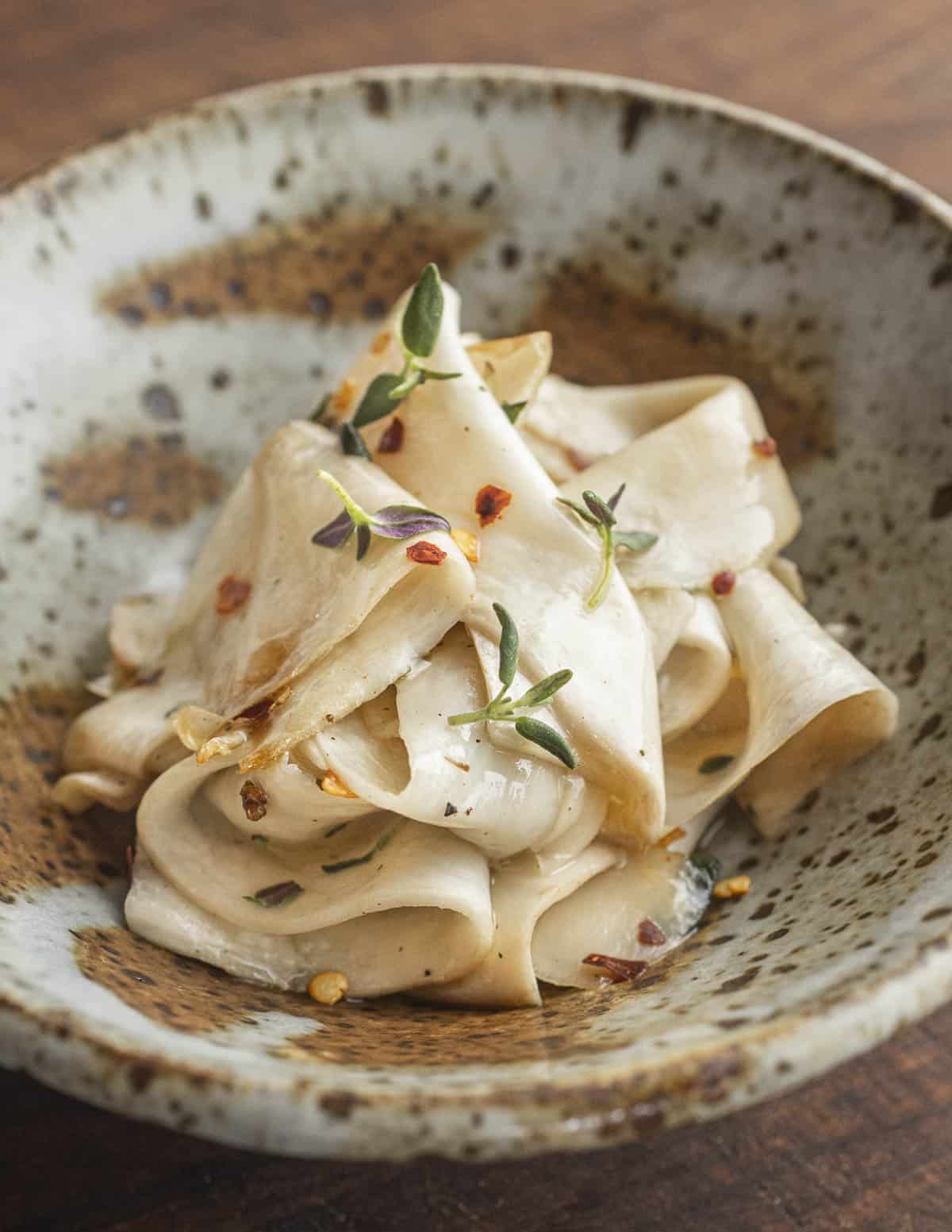
If you cut the mushrooms thicker (¼ inch) they make a good mushroom jerky.
King Oyster Mushroom Recipes
While you can use them in just about any recipe, I gathered a few of my favorite ways to cook them that highlights some of the attributes discussed in this post.
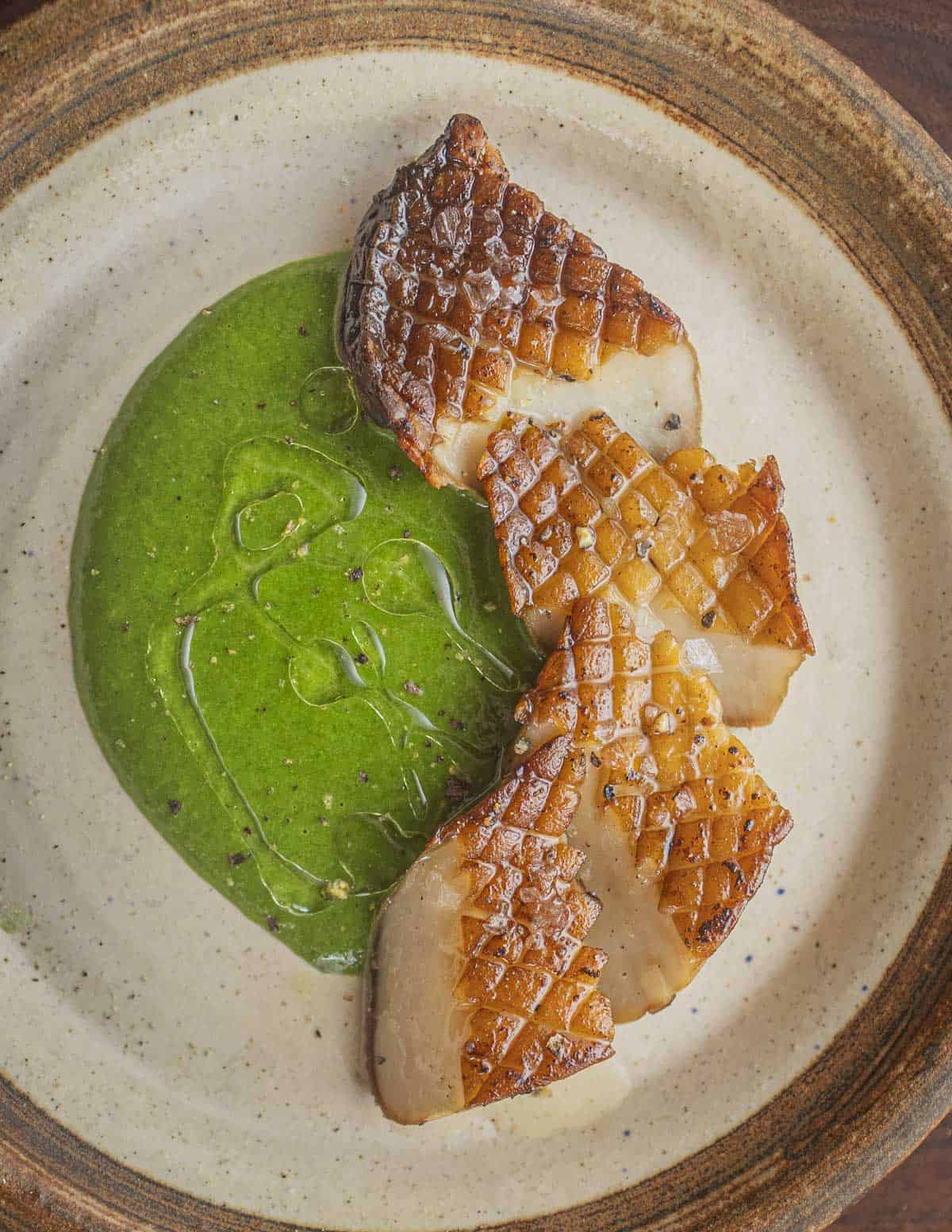
Scored and Pan Seared Mushrooms
Cut large mushrooms in half and carefully score the cut sides in a fine cross-hatch pattern. Cook in a cast iron pan on medium-high heat, flip, and pan roast in a hot oven until cooked.
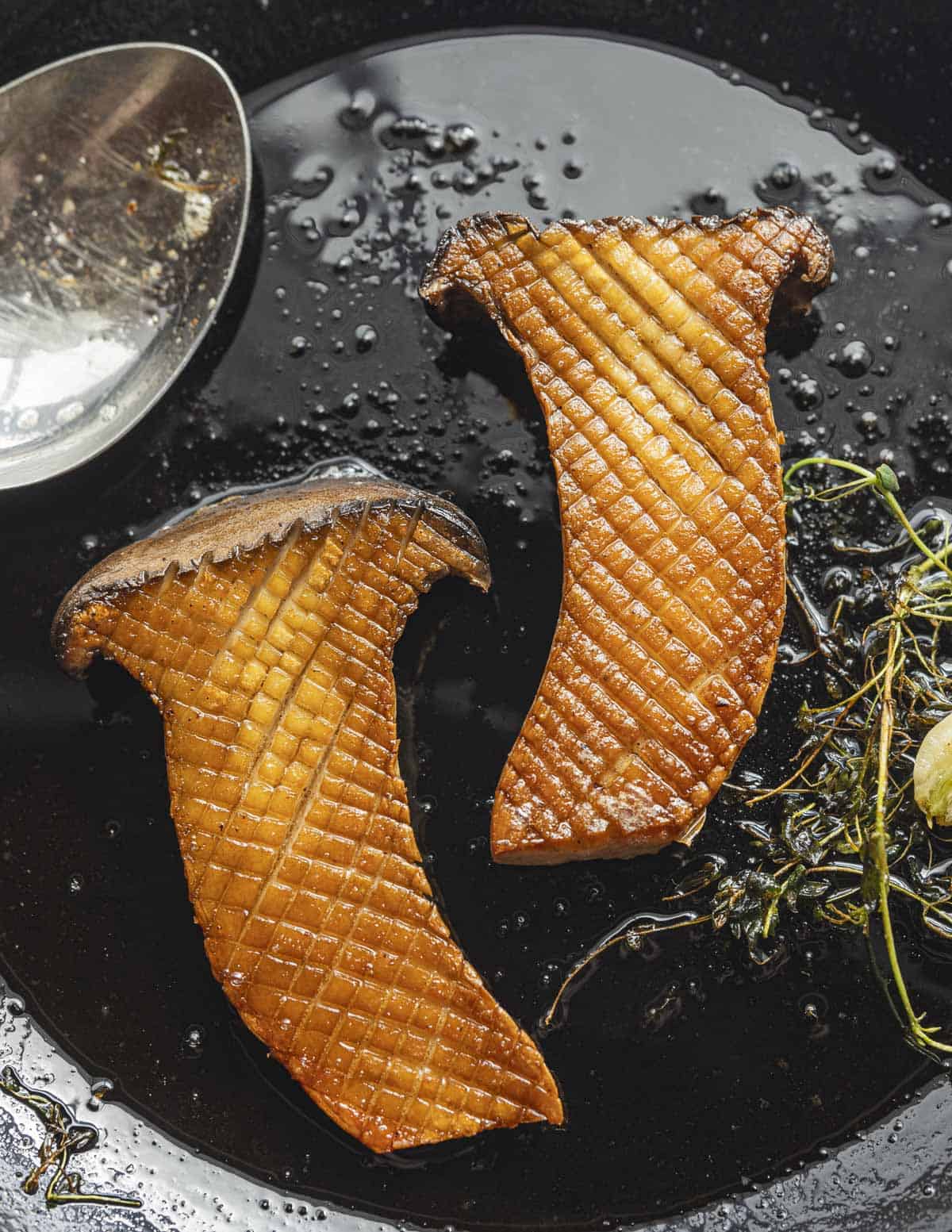
Put them back on the burner, add a knob of butter, a crushed garlic clove and a few thyme sprigs and continue cooking until the scored side is perfectly caramelized. Serve whole or sliced, seasoned with flaky salt.
Shaved Oyster Mushroom Kimchi
Follow my recipe for mushroom kimchi using king oyster mushrooms thinly shaved on a mandoline. Lightly sweat or steam them before fermenting to make them pliable.
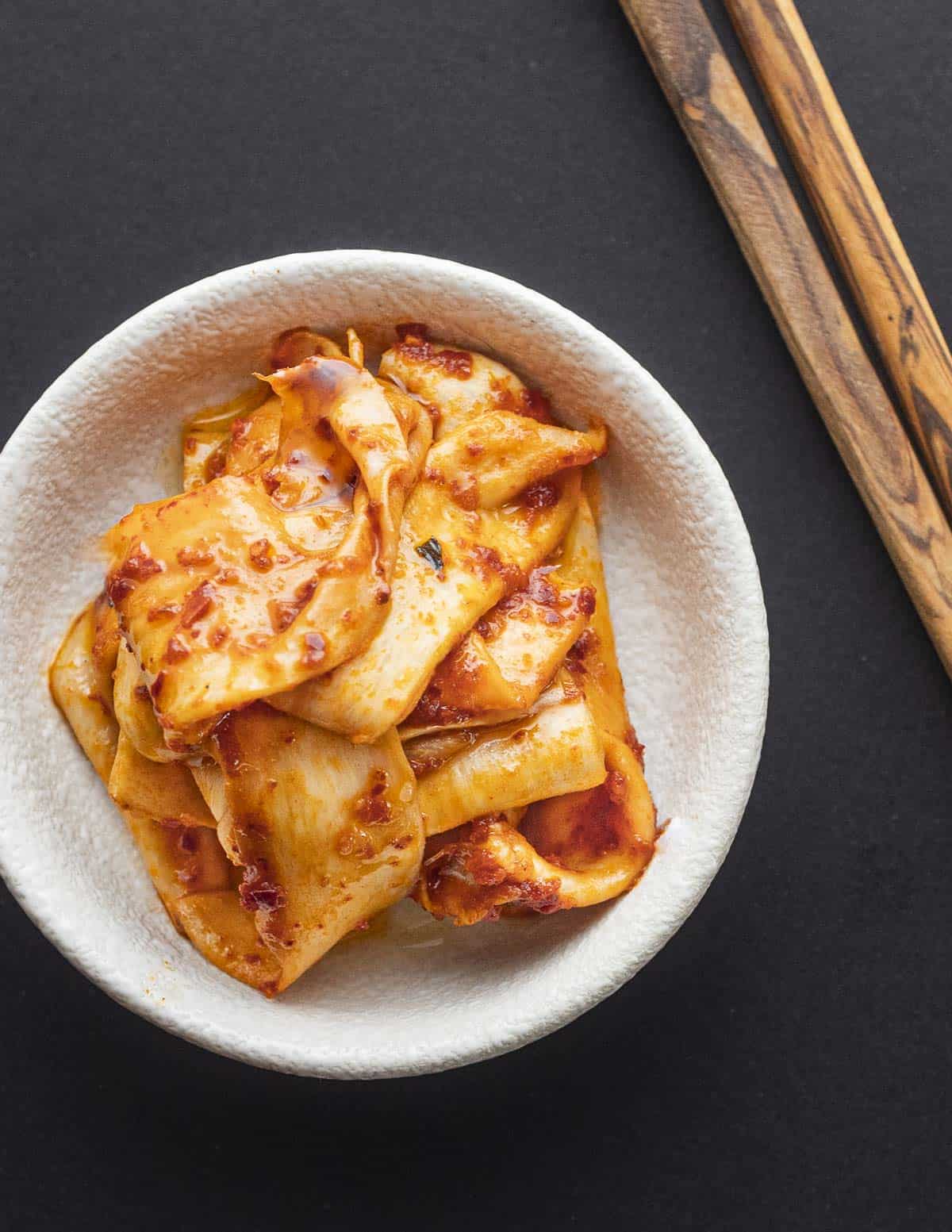
Serve them warm or cold, fermented or simply marinated. They make a nice garnish for rice dishes and brothy soups like ramen.
Mushroom Saag Curry
A delicious, thrifty way to have mushrooms as a main course. Cut the mushrooms into large cubes and brown them well. Follow my recipe for lamb saag curry, using 2 lbs of mushrooms instead of meat, and 1 cup of coconut milk for all of the liquid. You can also add potatoes cut into the same shape.
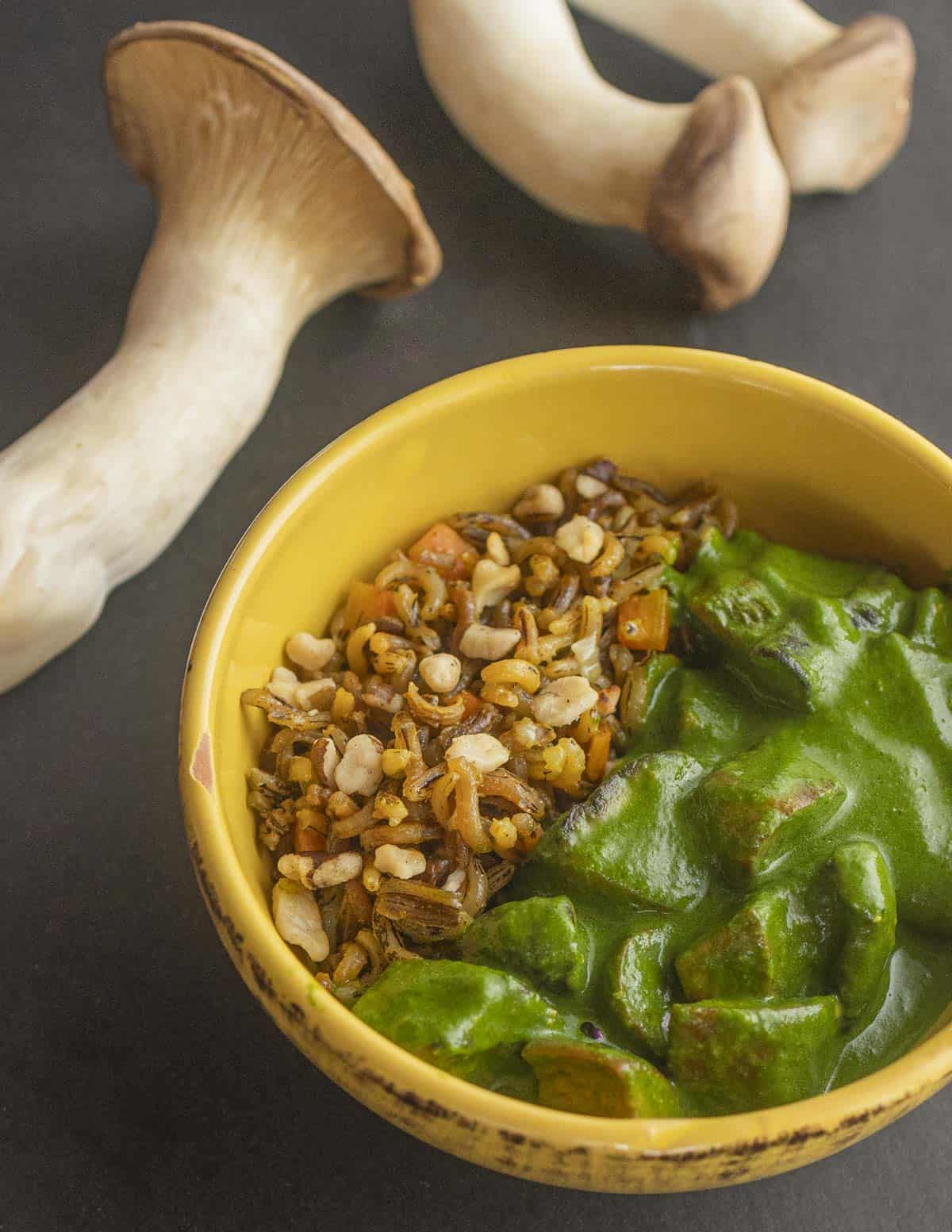
Whole Roasted Mushrooms with Chimichurri
Trim the stems from smaller mushrooms and put into a hot pan whole with oil. Bake in a 375 F oven, turning occasionally until browned all over. Put the pan back on the burner to get the perfect golden brown. Add a little oil if the pan dries out.
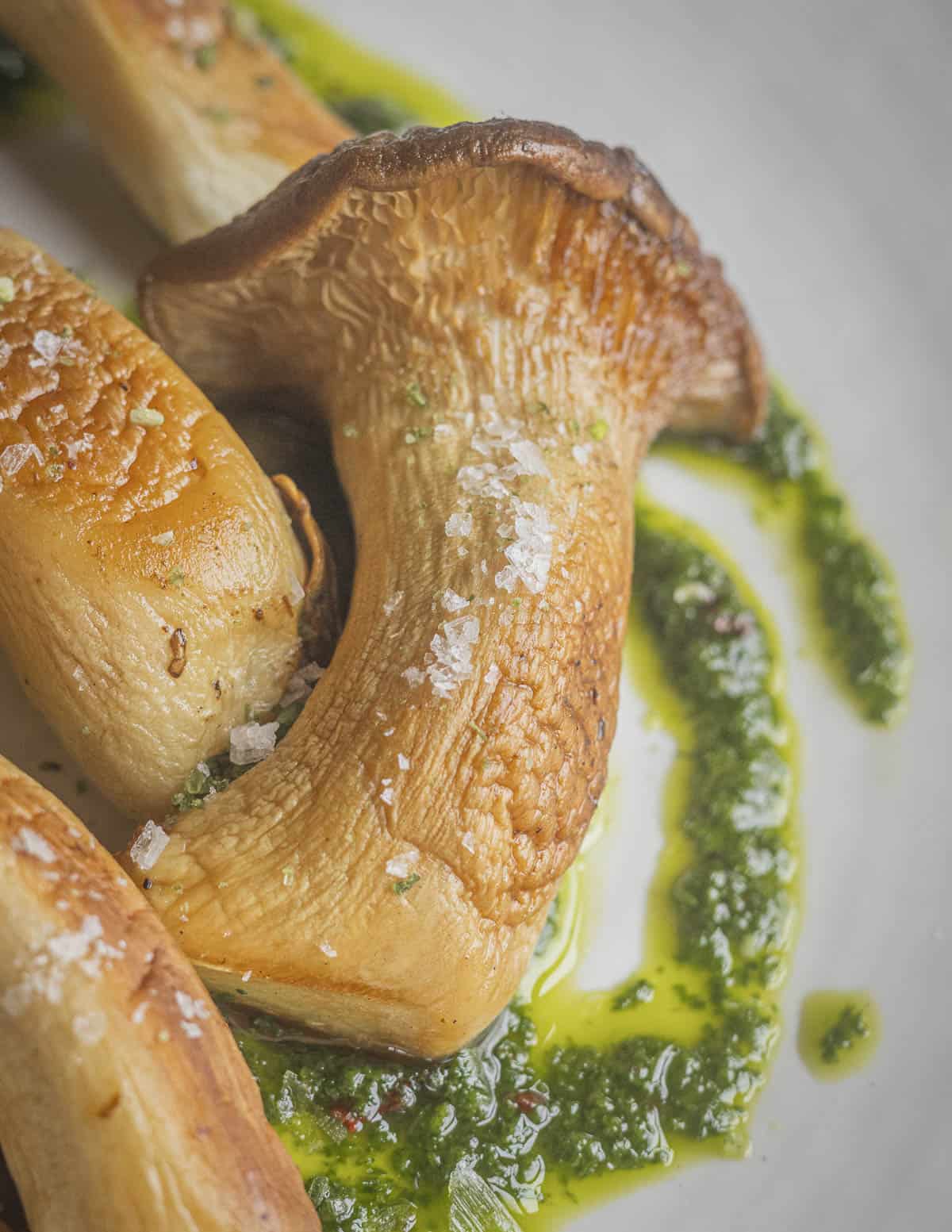
Serve the mushrooms with flaky salt and your favorite tart herb sauce, like chimmichurri.
Mushroom Scallops
To serve 2, cut up 8-12 oz thick king oyster stems into 1 inch rounds. Brown them well in oil. Add a small minced shallot and a small garlic clove, deglaze the pan with white wine, add ½ cup chicken stock and a teaspoon of flour kneaded with a teaspoon of butter.
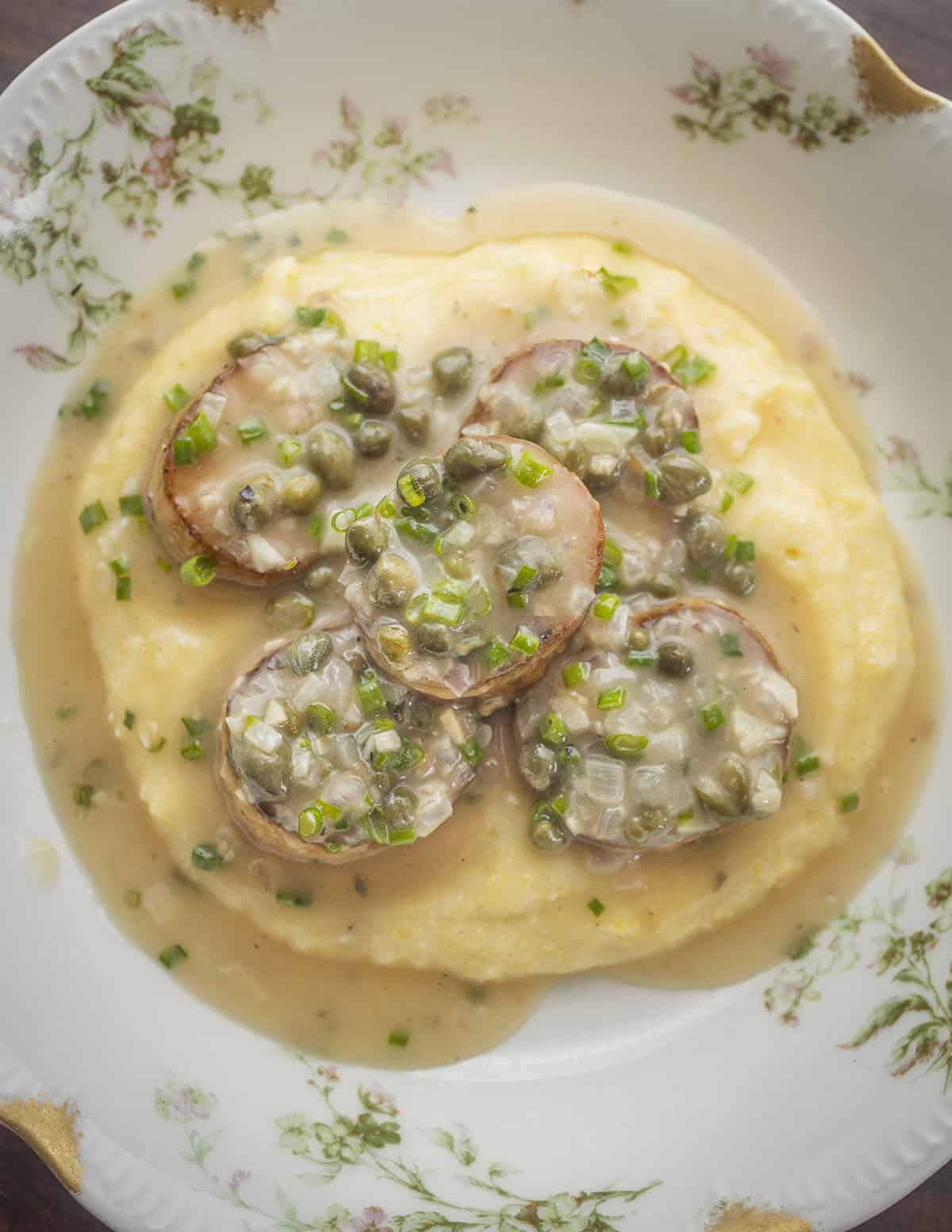
Simmer the sauce to thicken, add two tablespoons capers, chives and lemon juice to taste. It's nice with soft polenta or just wilted spinach.

Pixie
I SO appreciate your creativity!
sarahspectacular
I've always found king oysters rather boring, flavor wise. They're fun to cook and beautiful on a plate, but the taste just doesn't match the visuals for me. Is marinating them then cooking them possible? Or would that make them absorb too much water.
Alan Bergo
Like I mention getting that water weight out is important-they’ll always taste better browned, and I cook them down more than I will others like beech mushrooms. Marinades are great, but I’d brown them well first, aiming to reduce their volume by about half, think at least 10-15 minutes for large chunks on medium ish heat.
sarahspectacular
Good idea to brown them then marinate! I'll be trying that out.
Allan Gaudette
Fantastic sharing and display!
I wonder if you have a recipe with black-eyed peas you would present.
I wonder if mushrooms would compliment the unique pea flavor. I've been making "Frugal Gourmet (basic) black-eyed peas" recipe but I seem to like less onion to taste the pea flavor more. I lost my sense of smell in my 20's
so I can't rely on my judgment calls, lol
You have such talent!
Laura Nevins
Thank you for another beautiful and inspiring post! The quality of what you share is remarkable. I'm looking forward to incorporating these mushrooms into my cooking and am also happy to report that I happened upon Pioppino mushrooms at a new local mercantile in the Nashville, TN area that were grown in Beechgrove, TN.
Alan Bergo
Hey thanks Laura
Ellen Kellor
I really enjoyed this creative and diverse array of King Oyster recipes! I am trying to eat less meat for ecological purposes, and mushrooms are one of the more satisfying alternatives, that do not leave me craving when prepared as the main. I grew my first mushrooms recently and they included King Oysters, which were so fun to grow and yielded a nice bit of mushroom jerky (also a first). Your recipes are good food for thought, and for eating! Gratitude.
Alan Bergo
Thanks Ellen. These are a great one to know.